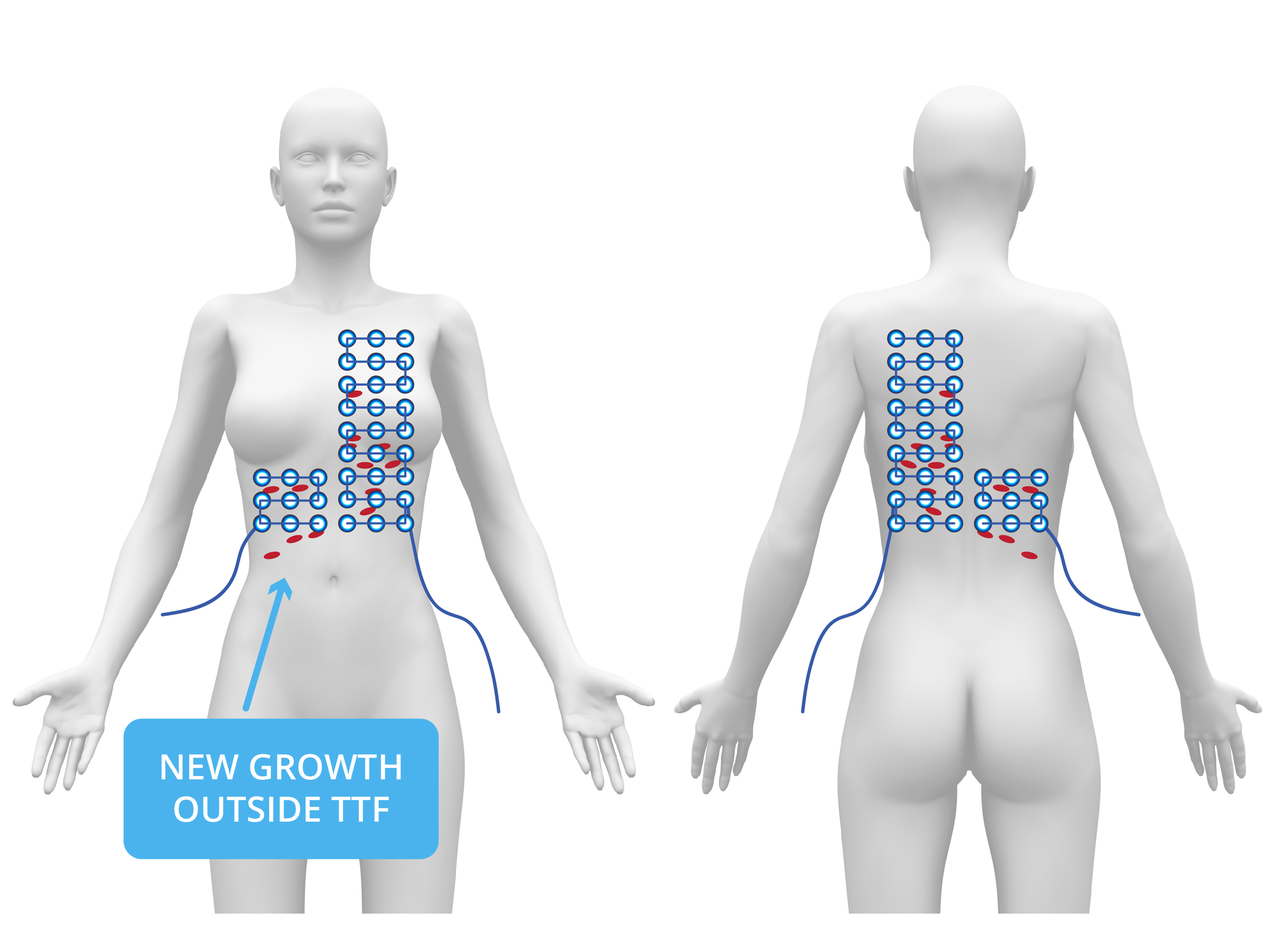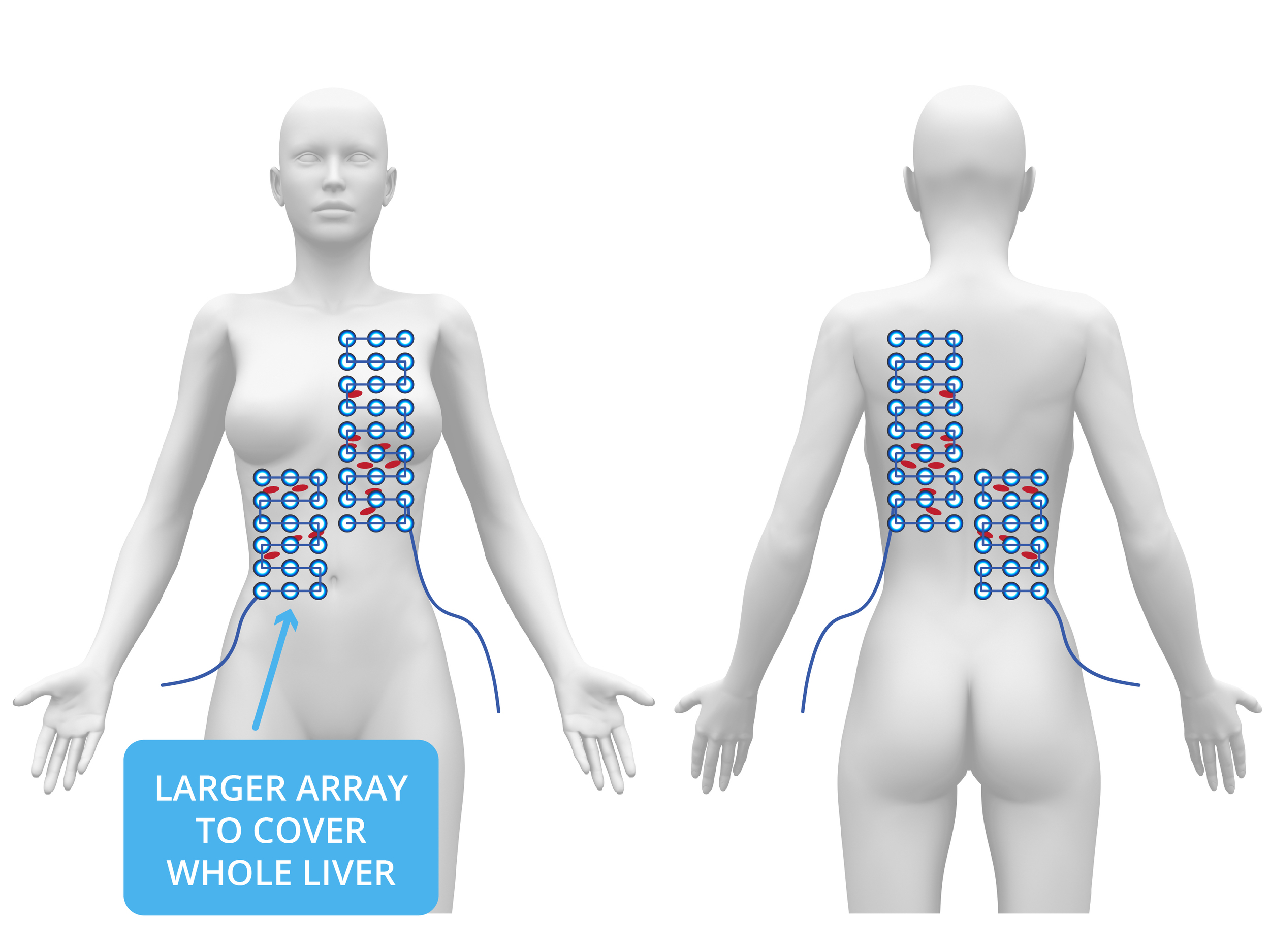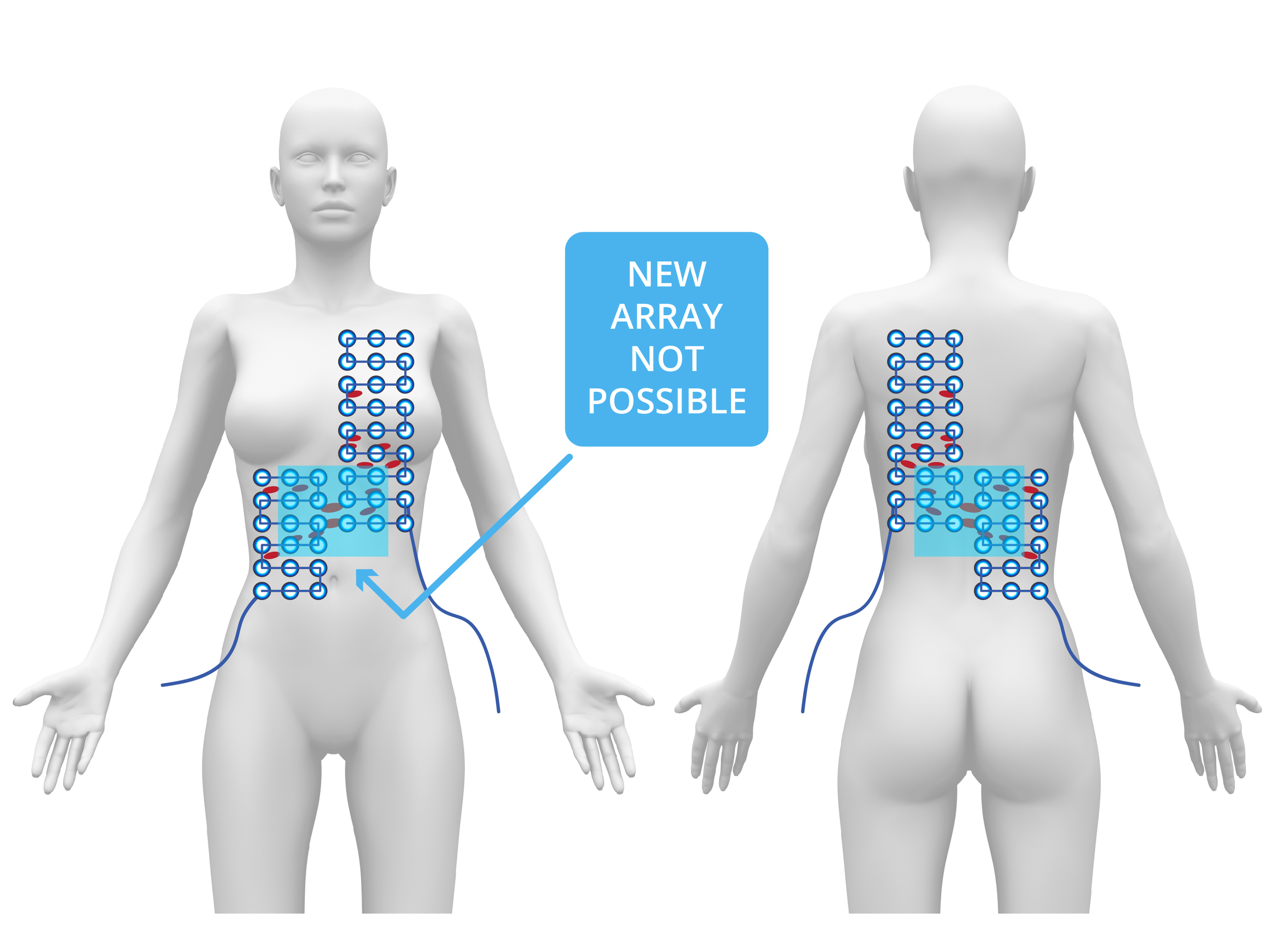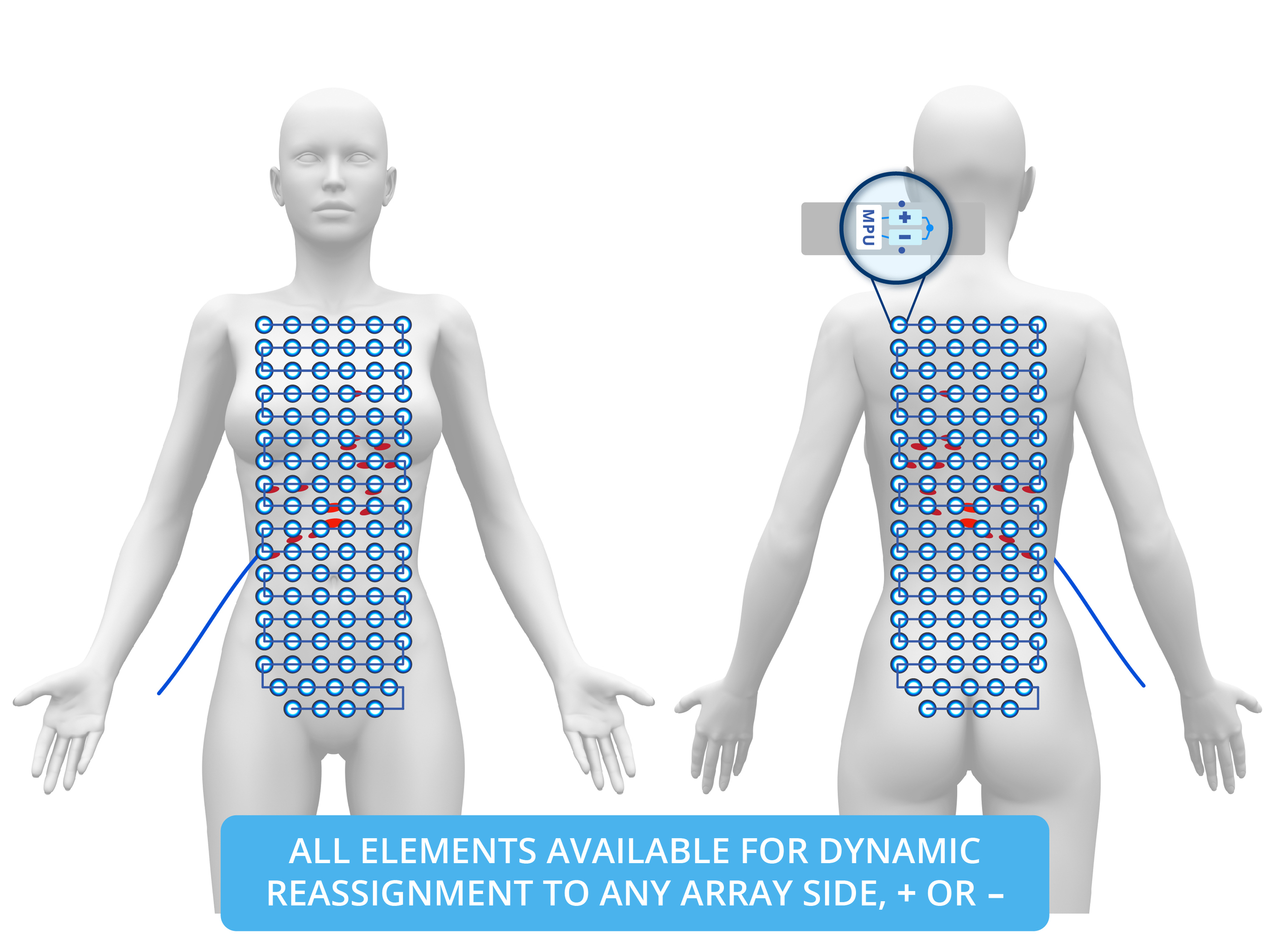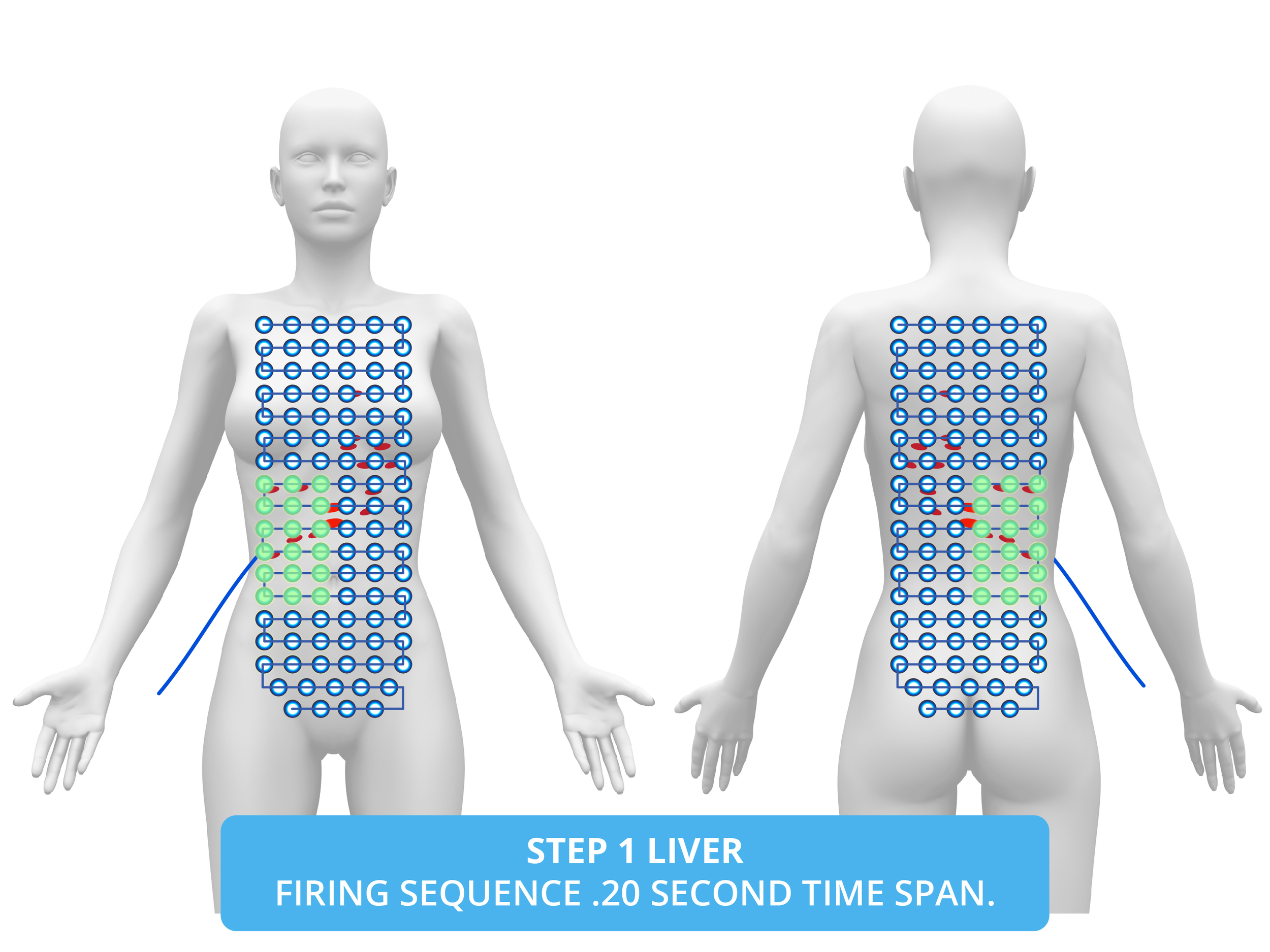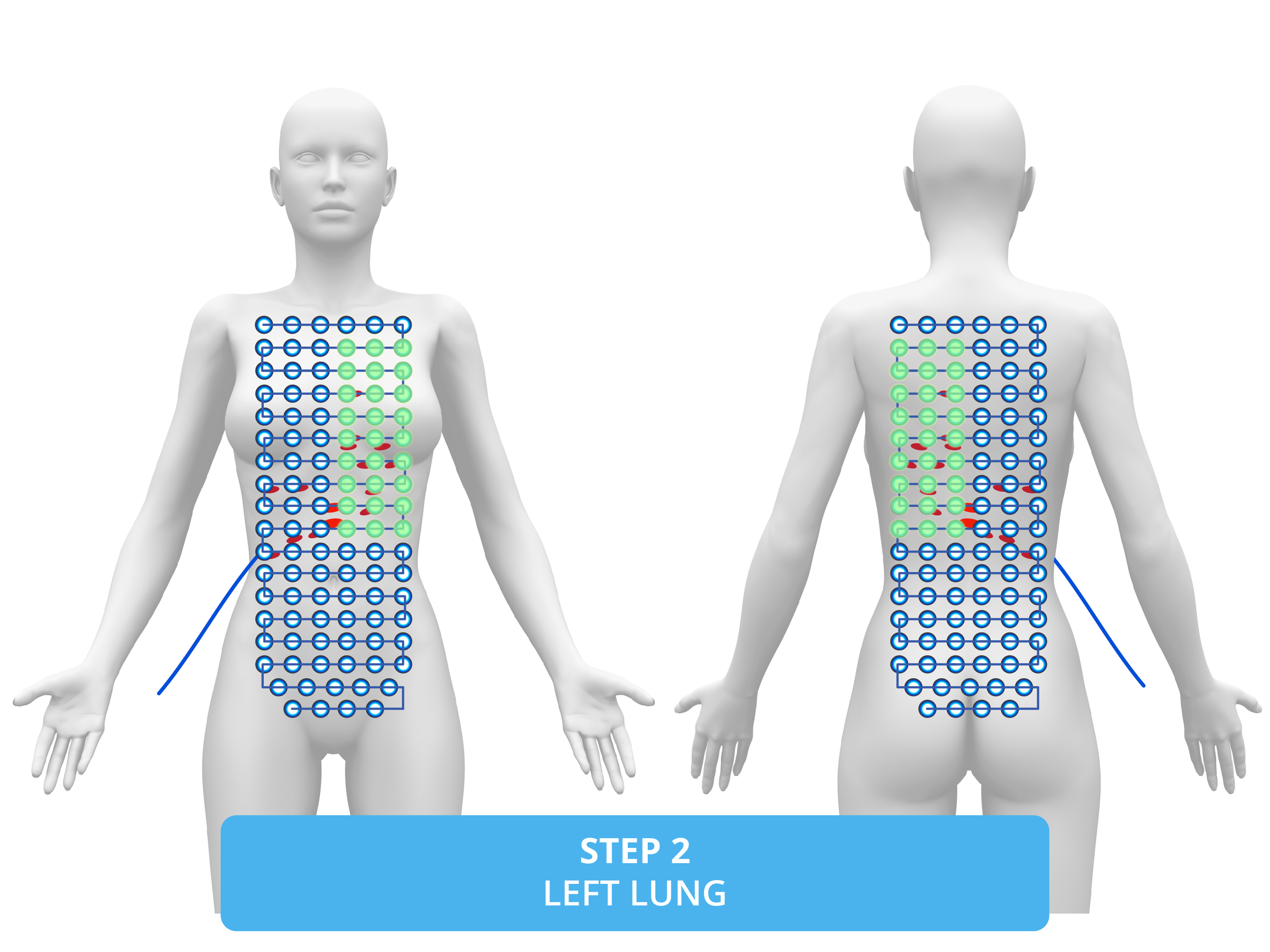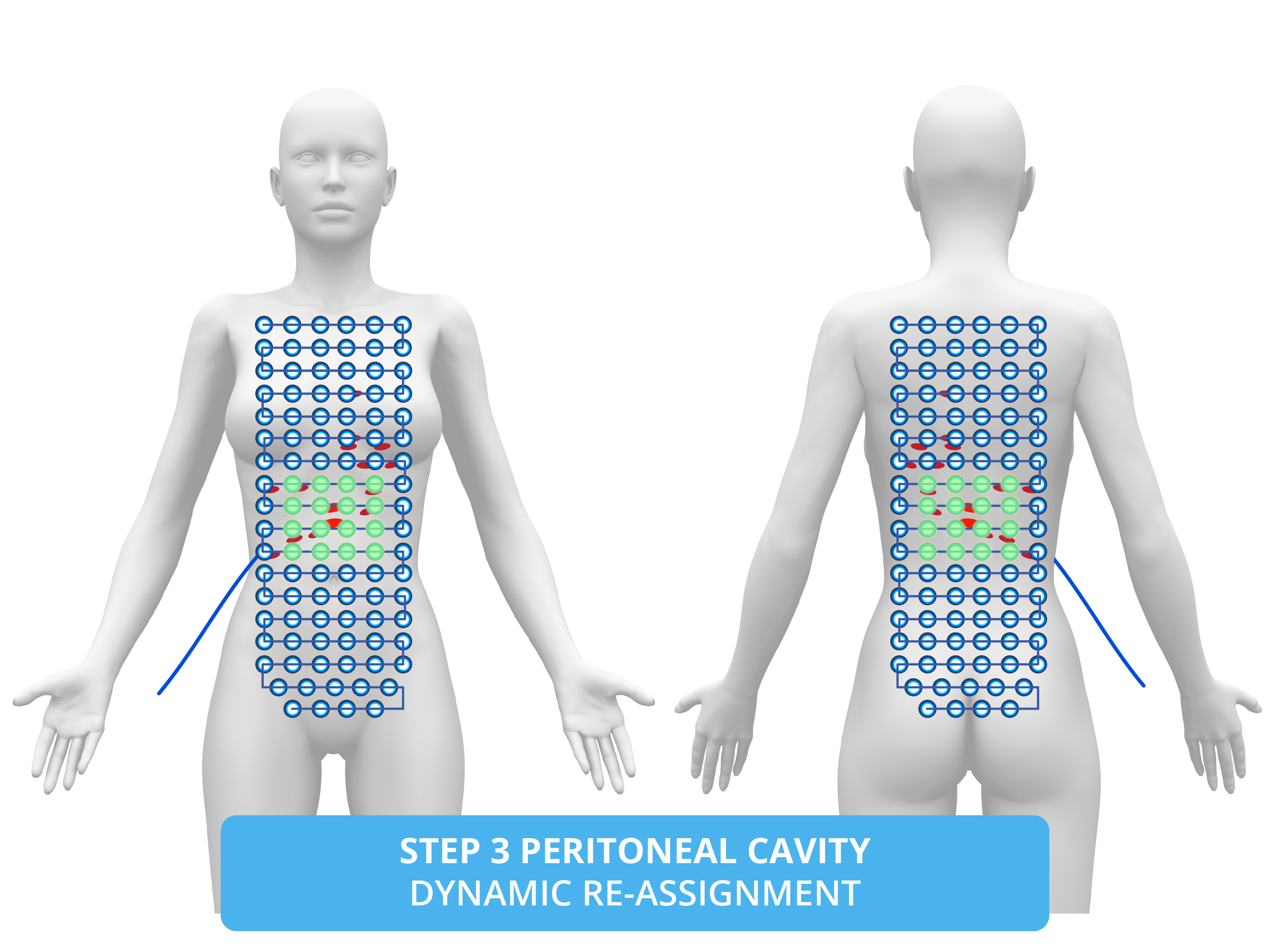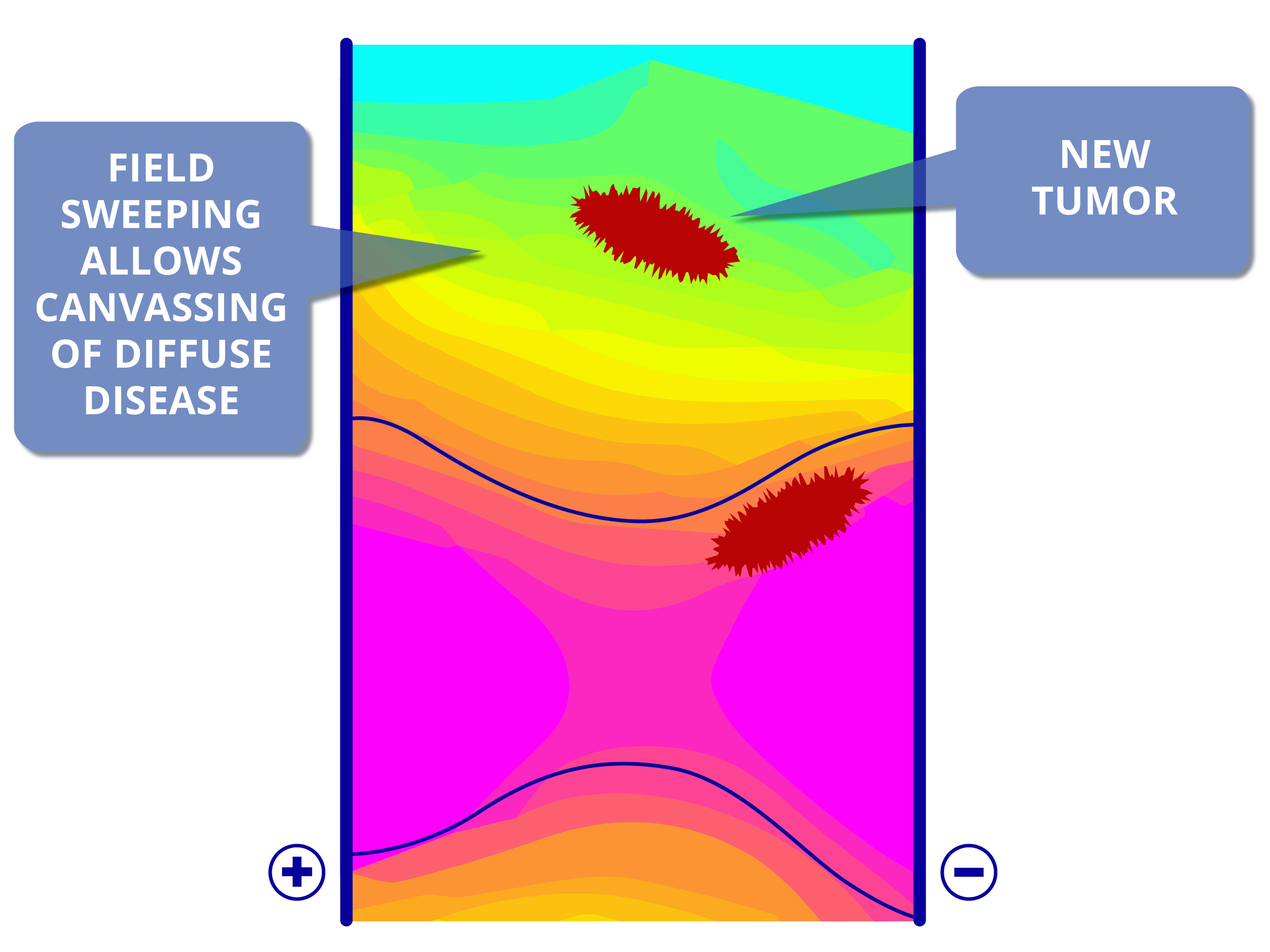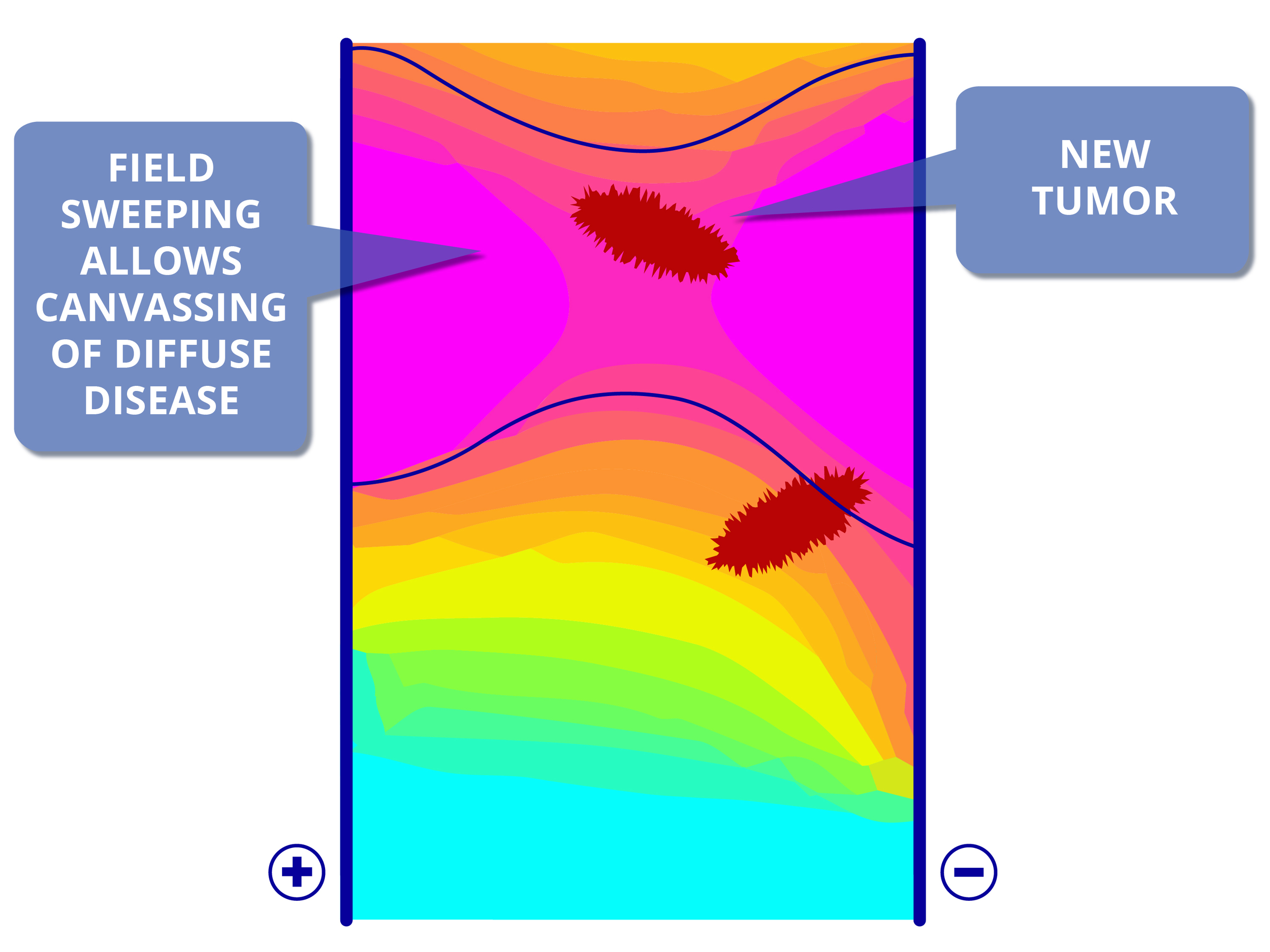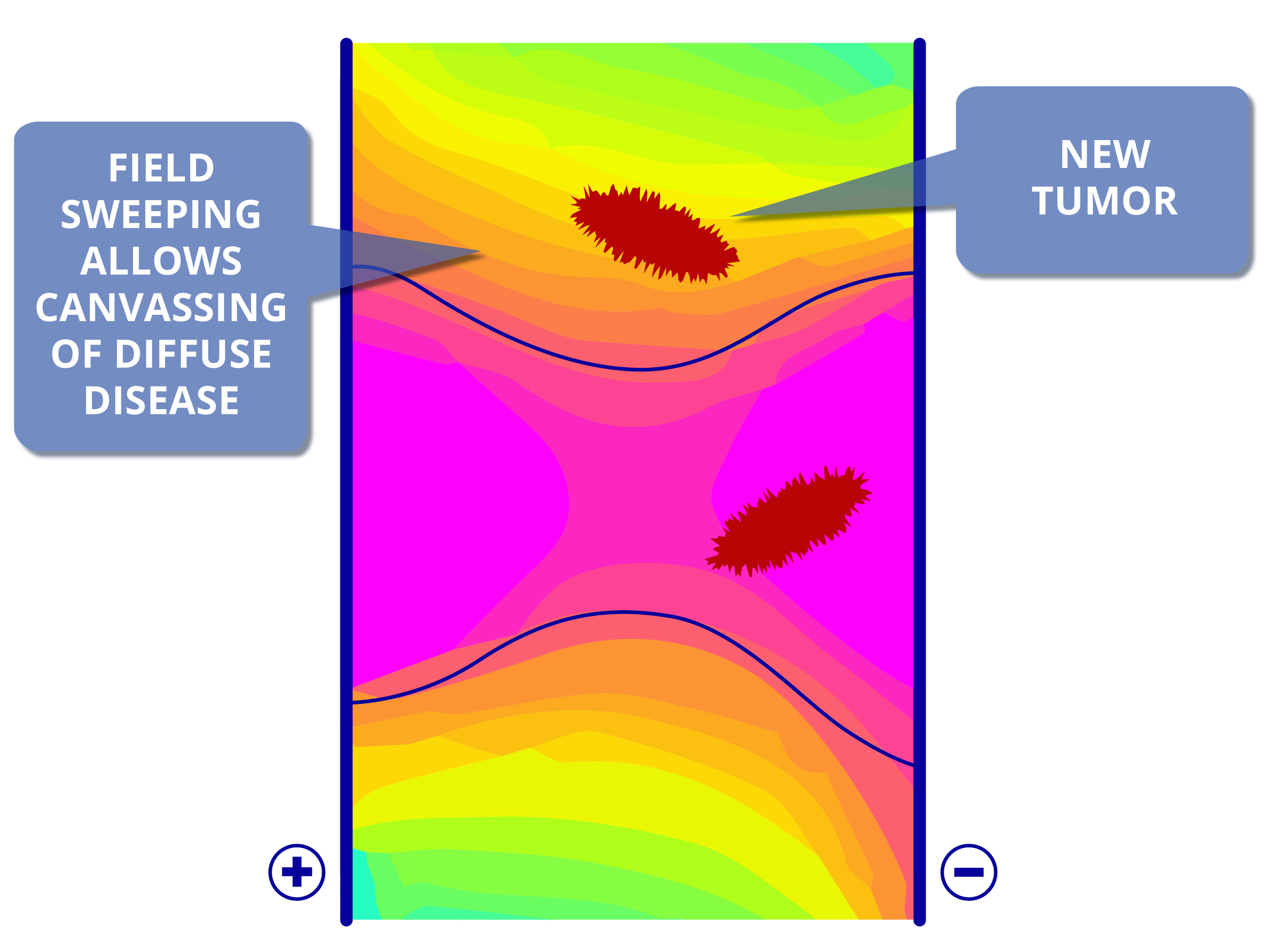Presently, Tumor Treating Fields (TTF) are delivered by using two static arrays placed opposite one another on the body. The arrays are made up of a number of special ceramic discs with a thin layer of silver on one side. Each disc is called an array element. Electric connection is made on the silver side only. Two arrays are energized simultaneously—one side positive and one side negative. Electric field formation or coupling occurs between the two arrays through the body (no current touches the skin).
click on image to view larger
click on image to view larger
The following simulation image shows the effective shape of a tumor treating field as it passes through a homogenous material (cross section of the human body—tissue types removed for illustration purposes).
The dark magenta color represents a TTF strong enough to kill cancer cells. The yellow and blue areas show insufficient field strength. In this simulation, cancer outside the magenta area would not be treated. In order to treat cancer outside of the midpoint, the arrays that deliver the TTF would need to be physically moved. However, this would just cause new weak areas of TTF to emerge. This phenomenom is what makes the present form of static TTF good at treating localized cancer that can be easily targeted, but much less effective at treating diffuse or wide-spread cancer in late-stage patients.
Below, it is evident that adding new sets of static arrays eventually fails because arrays would need to overlap to accurately target new cancer tumors. Arrays, of course, cannot be put on top of other arrays.
LifeBridge Innovations, PBC solves this problem with its patented programmable disc system. The LB10000 TTF system achieves dynamic reassignment of array elements. Programmable discs can be programed to cover any area of the body.
Waves or sweeps of TTFs can be sent across the entire abdomen. In some cases, two or more fields can be formed at the same time. The strongest portion of the TT field can be directed to all reachable areas, unlike static TTF.
Preclinical research shows that a TTF that affects mitosis and then stops—but starts up again in a short period of time (three seconds or less)—has the same cancer-killing effect as that of a constant TTF.


